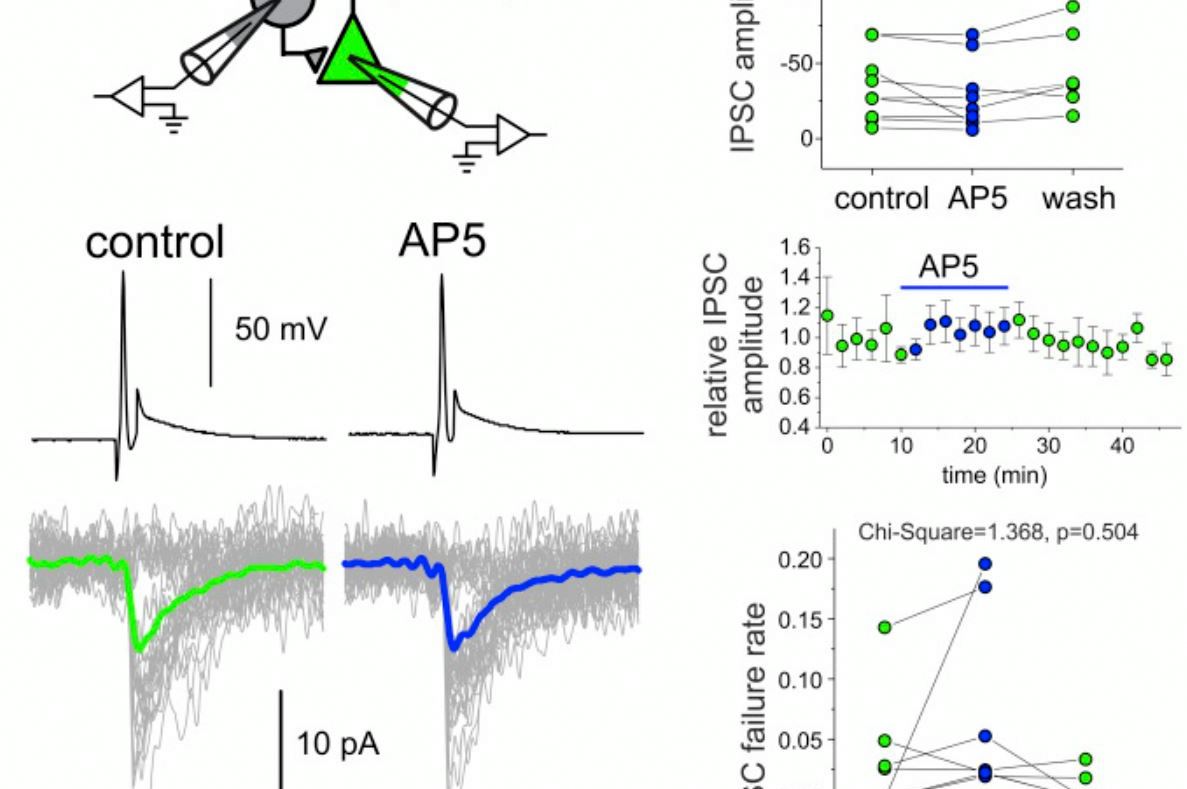Findings by Dr. Guillermo Gonzalez-Burgos and Dr. David Lewis Indicate that NMDAR Activation Enhances Inhibition of PCs by PVBCs

Understanding the mechanisms by which N-methyl-D-aspartate receptors (NMDARs) regulate cortical circuit function is crucial for testing hypotheses that NMDAR hypofunction is involved in the pathophysiology of schizophrenia. Recent studies reveal that presynaptic NMDARs control transmitter release at cortical synapses, suggesting novel mechanisms of NMDAR action in cortical circuits. If presynaptic NMDARs enhance gamma-aminobutyric acid (GABA) release in cortex, they could participate in NMDAR-dependent pyramidal cell (PC) disinhibition, a mechanism hypothesized to contribute to schizophrenia pathophysiology in previous studies.
Using whole-cell recordings from synaptically connected pairs in brain slices from mouse prefrontal cortex (PFC), Guillermo Gonzalez-Burgos, PhD, Associate Professor of Psychiatry, and David Lewis, MD, Department Chair, together with colleagues from the Department’s Translational Neuroscience Program, examined whether presynaptic NMDAR effects enhance GABA release at parvalbumin-positive basket cell- (PVBC-) to PC synapses and if NMDAR activation affects PVBC-to-PC inhibition in a manner consistent with a presynaptic mechanism. The data suggest that NMDAR stimulation enhanced the strength of PVBC-to-PC synapses, and several lines of evidence suggest that this effect is mediated by presynaptic NMDAR-mediated regulation of GABA release. Interestingly, the effects observed in brain slices acutely maintained in vitro suggest that the functional impact of this presynaptic effect depends on the activity state of the PFC network. More specifically, the data indicate that the NMDAR-mediated increase in synaptic strength at PVBC-to-PC synapses enhances the gain of inhibition specifically during high network activity states driven by recurrent excitation such as those presumably observed in PFC circuits during working memory tasks.
Therefore, the data suggest that, independent of causing PC disinhibitions, NMDAR hypofunction at PVBC-to-PC synapses in schizophrenia might disrupt a crucial mechanism that normally enhances PC inhibition when the PFC network is engaged in working memory-related operations.
“Currently, empirical support for NMDAR hypofunction in PVBCs in the cortex of subjects with schizophrenia is scarce,” said Dr. Gonzalez-Burgos. “Thus, assessing the relevance of our current findings for novel understanding of the pathophysiology of schizophrenia would require characterizing the NMDAR subunits present presynaptically in PVBC-to-PC synapses and determining whether the levels of these subunits are altered in the PFC of individuals with schizophrenia.”
Presynaptic Effects of N-Methyl-D-Aspartate Receptors Enhance Parvalbumin Cell-Mediated Inhibition of Pyramidal Cells in Mouse Prefrontal Cortex
Pafundo DE, Miyamae T, Lewis DA, Gonzalez-Burgos G
Biological Psychiatry, published online January 2018, doi.org/10.1016/j.biopsych.2018.01.018
